DPJ’s Placemaking editorial series is produced in partnership with the Phoenix Metro Chapter of the AIA (American Institute of Architects). Together we will explore the buildings and structures of our city, look closer at what makes them special, and perhaps challenge those who want to contribute to our built environment to approach downtown development in a more thoughtful way.
Everyone agrees that a walkable, vibrant downtown with memorable places to live, work, and play would be a good thing. There seems to be much less of a consensus on what that means, in physical terms, and how you get there.
We have been trying for decades, at least since the 1970s, to revive downtown Phoenix following the suburban flight that occurred after World War II. I recall in the early ‘80s tracking all of the exciting new developments downtown, and how, collectively, they were going to do the trick. Anybody remember the French Quarter? The Mercado? The Mile-High Tower? These, and many others, were examples of a top-down approach to what we now call “placemaking,” the attempt to create buildings, spaces, or streetscapes that people would love because of their unique appeal, comfortable ambiance, and vibrancy.
All of our failed attempts at placemaking have common elements. First of all, they tend to be ideas hatched by a single person or small group, grasping for a unifying concept that looks, on its surface, likable. Not recognizing the positive aspects of their place, they attempt to evoke a different place; something else, or somewhere else that is already loved. Who doesn’t like the excitement and street life of New Orleans, or of a Mexican market like in Nogales, or the prestige of having the tallest building in the world? Build it and they will come, they say, because it will be so cool that it will sell itself.
These developments tend to have a grand scale in an attempt to create their own context. Civic Plaza, the basketball arena, and the baseball stadium each were supposed to “fix” downtown in one bold stroke. Arizona Center
went to the grand scale as well, but more successfully. The appeal of a mega-development is understandable from an economic perspective – you can get a whole lot done in a short period of time, and stretch your funding as far as you can. The problem with grand-scale projects is that they tend to become monotonous and uninteresting, particularly after a few years when the novelty wears off, and lack the fine-grained texture that great places have.
None of the failed attempts at placemaking had broad community support, and that was their downfall. Of course, in the early years of rebuilding downtown, there was little community there to provide support. So instead, the developments were geared toward an imaginary “customer,” a.k.a. future downtown resident or patron. Unfortunately, most failed because they did not attract the forecast customers.
Today, we are fortunate to have developed a larger constituency for downtown, people who already live here, already work here, and who are strong advocates for their downtown. And those people are the key to finally re-making a successful center city.
Successful placemaking requires building community consensus: ground-up, not top-down. The top-down approach is much easier, but the results speak for themselves. Ground-up means you have to ask people what they want – and to get a meaningful response, you have to actually engage in a dialogue, because most people really have not thought that much about what they want their city to look like. That’s hard, and that’s why you so seldom see it done.
I look to the new Hance Park planning effort as an example of how community consensus building can work. They got the community involved, they asked the right questions, and from that data created a plan that contained the elements that people want – and likely will use. Time will tell, but I expect that the next generation Hance Park will not appear on a failed-developments list.
Placemaking also requires cooperation. When individual property owners look only within their own boundaries, and propose developments without integrating into their context, opportunities can be wasted and good places can be destroyed. As we enter the next boom cycle of building downtown, developers have been proposing projects without public input – living within their existing land rights, not because they are being good neighbors, but because it’s easier, and more definite, than engaging with the community. Gauging from the groundswell of resistance, these developments don’t appear to be making the kind of places that the community wants.
We have the opportunity to create a community vision that can serve as the measuring stick for new developments. We can ask that projects respect their historic, geographic, and social context into which they are built. It’s hard – but the results would be worth it.


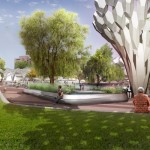

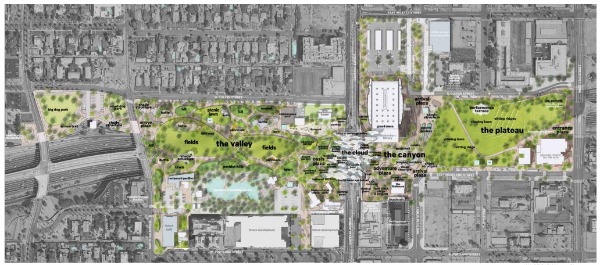
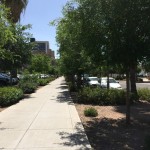
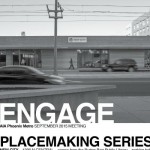
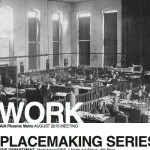

I was one of the designers of Hance Park in 1989-90. Fresh out of ASU arch grad school. (altho in 1983 I was a 30 yr old returning student, with a previous degree in fine art. oh, and if I really wanted to waste time and money, with one more year of college, I’d have a degree in art history too- woo hoo!) So since I was very far from the top of the team, I did get to put my 2 cents in, especially at the area below and east of the Central Ave bridge. We just called it the ‘hardscape area’. When you work in an architectural office attached to a large engineering firm, HNTB – the company that designed the I-10 ‘cut thru’, the in-house names of things tend to be prosaic. And also being a ‘rookie’ I was not allowed to lead any public presentations, so I was not included in memos other than to run some prints and put some color on them. I was aware that Parks Dept did have approval of the designs, and then final by City Council. Other than that, I don’t know what kind of ‘public’ or ‘neighborhood’ involvement happened. The neighborhood involvement, expressly sought goes back to Jane Jacobs in the 50’s so it’s not exactly a new deal.
I was asked last year by a downtown rag to write an article about the proposed design. So I spent quite a bit of time walking the park again. I did produce a ‘draft’, that was 11 pages – waaay too long, and was instructed to cut it down to 1 page. That would have been pretty difficult, basically a ‘yep’ or ‘nope’ kind of opinion, so I let it slide. I really do try to be fair, and I really am not defensive about the designs I produced. I worked hard, including very long hours -‘allnighters’ and weekends and i’m not stoopid. I’d spent the summer before in Rome; a travel scholarship studying exactly this kind of thing. I think we had a pretty cool concept, even a sly joke and funny thing, no one has picked it up,,,,But in the end, it gets built, the budget gets hacked and things built are not exactly as designed. For example, the ‘shade structures’ at the hardscape area – more prosaic language – were hacked – at $250k that’s a pretty modest amount these days. No one asked me to re-design them to take out some cost, they were just not built. So a few years ago when the adjoining neighborhoods started looking at spiffing up the place, I heard about it and frankly to generate some kind of work during the recession, i attended a couple meetings. It would have been a fairly simple process to re-use some of the existing structure already in the ground, and place some sturdy and useful shade canopies at the hardscape area. I even have a set of the original drawings, saved from the trash. My input was not much appreciated at the ‘clubby’ neighborhood meetings, so I skipped it. I’m a Phx native, but live in Tempe and even tho my Mom used to buy flowers weekly at Millie’s, guess i just don’t understand the place?
Then this whole deck park redesign thing got funded, somehow, with a pretty hefty fee I’m sure (hauling people in from NYC ain’t cheap!) and a new design team was in action. I attended the circus-like presentation at the park last summer. (paid for by the city?) Gotta admit, loved the mariachi band and the beer tent! It was also where the proposed budget to ‘re-invent’ the park was put out there. Something like $125m at $5m per ac. Ok, that’s about 5 times the original budget, in today’s bucks, apples to apples. Here’s my brief take on the park as it is now, ‘yep or nope’. Parts of the park are near perfect; some parts were not maintained well at all and need a bunch of help, and other parts just did not have anything happening there in the first place. So to put it simply, to scrape the entire 32 acres is almost an act of vandalism or maybe just designers exuberance or maybe……It just isn’t necessary. What’s the city saying on it’s trash trucks, ‘Reduce and Recycle’? Or everyone seems to like to talk about ‘adaptive re-use’? or maybe even ‘historic renovation or preservation’? the same goes for parks and park structures, not just buildings. One of my professional obligations is – if I can save the client some bucks, and still get a good result, that’s what I do.
Maybe another reason that some developers don’t want to engage with the community is that there has been so much anti-development rhetoric lately. Why would anyone want to sit down with people who demonize them with words like “cancerous” and “selfish”? Why would anyone have confidence that an intelligent discussion can occur when people complain about “condos” (even though most proposals are for apartments) and “high rises” (even though almost no projects proposed are tall enough to meet any widely-accepted definition of that phrase). Why would anyone believe that community engagement is productive when opponents of projects have circulated a dystopian image of Roosevelt Row dominated by chain stores while at the same time contradicting that scenario with complaints that projects have no ground floor retail at all? I could go on, but my point is that while I agree there hasn’t been much community engagement, I think it’s simplistic to put all the blame on developers.